Clinical and genetic risk factors for progressive fibrosis in metabolic dysfunction-associated steatotic liver disease
- PMID: 38967582
- PMCID: PMC11227360
- DOI: 10.1097/HC9.0000000000000487
Clinical and genetic risk factors for progressive fibrosis in metabolic dysfunction-associated steatotic liver disease
Abstract
Background: Fibrosis-4 (FIB4) is a recommended noninvasive test to assess hepatic fibrosis among patients with metabolic dysfunction-associated steatotic liver disease (MASLD). Here, we used FIB4 trajectory over time (ie, "slope" of FIB4) as a surrogate marker of liver fibrosis progression and examined if FIB4 slope is associated with clinical and genetic factors among individuals with clinically defined MASLD within the Million Veteran Program Cohort.
Methods: In this retrospective cohort study, FIB4 slopes were estimated through linear regression for participants with clinically defined MASLD and FIB4 <2.67 at baseline. FIB4 slope was correlated with demographic parameters and clinical outcomes using logistic regression and Cox proportional hazard models. FIB4 slope as a quantitative phenotype was used in a genome-wide association analysis in ancestry-specific analysis and multiancestry meta-analysis using METAL.
Results: FIB4 slopes, generated from 98,361 subjects with MASLD (16,045 African, 74,320 European, and 7996 Hispanic), showed significant associations with sex, ancestry, and cardiometabolic risk factors (p < 0.05). FIB4 slopes also correlated strongly with hepatic outcomes and were independently associated with time to cirrhosis. Five genetic loci showed genome-wide significant associations (p < 5 × 10-8) with FIB4 slope among European ancestry subjects, including 2 known (PNPLA3 and TM6SF2) and 3 novel loci (TERT 5.1 × 10-11; LINC01088, 3.9 × 10-8; and MRC1, 2.9 × 10-9).
Conclusions: Linear trajectories of FIB4 correlated significantly with time to progression to cirrhosis, with liver-related outcomes among individuals with MASLD and with known and novel genetic loci. FIB4 slope may be useful as a surrogate measure of fibrosis progression.
Copyright © 2024 The Author(s). Published by Wolters Kluwer Health, Inc. on behalf of the American Association for the Study of Liver Diseases.
Conflict of interest statement
Julie A. Lynch received grants from Alnylam, Astellas, AstraZeneca, Biodesix, Celgene, Cerner Enviza, GlaxoSmithKline, IQVIA, Janssen, Kantar Health, Myriad Genetic Laboratories, Novartis, and Parexel. Scott L. DuVall received grants from Alnylam, Astellas, AstraZeneca, Biodesix, Celgene, Cerner Enviza, GlaxoSmithKline, IQVIA, Janssen, Kantar Health, Myriad Genetic Laboratories, Novartis, and Parexel. David E. Kaplan advises and received grants from AstraZeneca and Roche Genentech. He received grants from Bausch, Exact, and Glycotest. Tae-Hwi Scwahtes-An consults for Target RWE. Kyong-Mi Chang consults for GlaxoSmithKline. He advises Virion. The remaining authors have no conflicts to report.
Figures

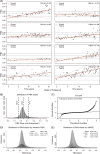
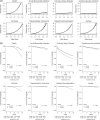


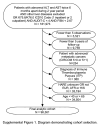

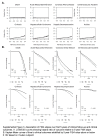
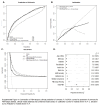







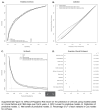
Similar articles
-
Use of PNPLA3, TM6SF2, and HSD17B13 for detection of fibrosis in MASLD in the general population.Clin Res Hepatol Gastroenterol. 2024 Aug;48(7):102389. doi: 10.1016/j.clinre.2024.102389. Epub 2024 Jun 1. Clin Res Hepatol Gastroenterol. 2024. PMID: 38830575
-
Relevance of PNPLA3, TM6SF2, HSD17B13, and GCKR Variants to MASLD Severity in an Egyptian Population.Genes (Basel). 2024 Apr 4;15(4):455. doi: 10.3390/genes15040455. Genes (Basel). 2024. PMID: 38674389 Free PMC article.
-
PNPLA3 Polymorphism Is Inversely Correlated with Aortic Stiffness in Patients with Metabolic Dysfunction-Associated Steatotic Liver Disease Without Fibrosis.Int J Mol Sci. 2025 Apr 1;26(7):3256. doi: 10.3390/ijms26073256. Int J Mol Sci. 2025. PMID: 40244110 Free PMC article.
-
Integrating PNPLA3 into clinical risk prediction.Liver Int. 2025 Mar;45(3):e16103. doi: 10.1111/liv.16103. Epub 2024 Sep 16. Liver Int. 2025. PMID: 39282715 Free PMC article. Review.
-
Impact of PNPLA3 I148M on Clinical Outcomes in Patients With MASLD.Liver Int. 2025 Mar;45(3):e16133. doi: 10.1111/liv.16133. Epub 2024 Oct 16. Liver Int. 2025. PMID: 39412170 Free PMC article. Review.
Cited by
-
Diet composition impacts the natural history of steatotic liver disease.Hepatol Commun. 2025 Jun 19;9(7):e0754. doi: 10.1097/HC9.0000000000000754. eCollection 2025 Jul 1. Hepatol Commun. 2025. PMID: 40536509 Free PMC article.
-
Impact of weight loss and lifestyle modifications on liver fibrosis in MASLD and MetALD: A cohort study.Biomed Rep. 2025 Jul 25;23(4):158. doi: 10.3892/br.2025.2036. eCollection 2025 Oct. Biomed Rep. 2025. PMID: 40777630 Free PMC article.
-
Recent advances in MASLD genetics: Insights into disease mechanisms and the next frontiers in clinical application.Hepatol Commun. 2025 Jan 7;9(1):e0618. doi: 10.1097/HC9.0000000000000618. eCollection 2025 Jan 1. Hepatol Commun. 2025. PMID: 39774697 Free PMC article. Review.
References
-
- Younossi ZM, Koenig AB, Abdelatif D, Fazel Y, Henry L, Wymer M. Global epidemiology of nonalcoholic fatty liver disease—Meta-analytic assessment of prevalence, incidence, and outcomes. Hepatology. 2016;64:73–84. - PubMed
-
- Musso G, Gambino R, Cassader M, Pagano G. Meta-analysis: Natural history of non-alcoholic fatty liver disease (NAFLD) and diagnostic accuracy of non-invasive tests for liver disease severity. Ann Med. 2011;43:617–649. - PubMed
Publication types
MeSH terms
Substances
Grants and funding
LinkOut - more resources
Full Text Sources
Medical
Miscellaneous

